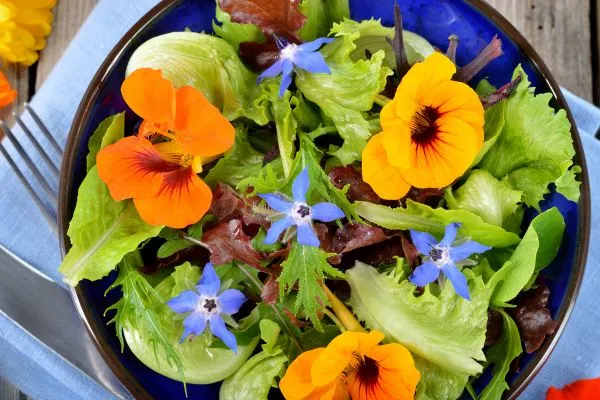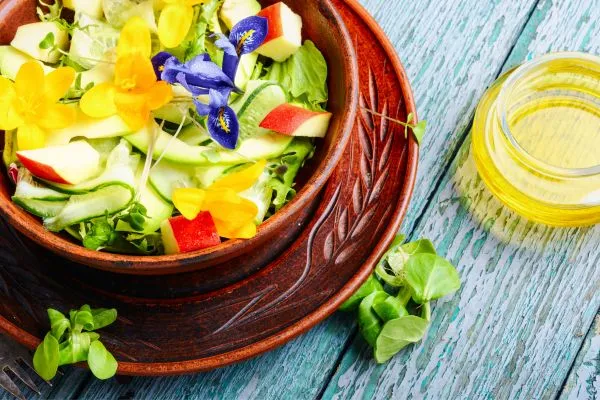Edible flowers not only add a burst of color to your garden but also offer a unique and delightful addition to culinary creations.
Imagine garnishing your salads, desserts, and drinks with beautiful petals that not only look visually stunning but also impart a subtle flavor.
In this article, we will explore the world of edible flower plants, from selecting the right varieties to incorporating them into your favorite dishes.
Get ready to elevate your culinary experience with the vibrant hues and delicate flavors of edible flowers!
Choosing the Right Edible Flower Varieties
When it comes to edible flowers, there is a wide range of options to choose from. Each variety offers its own distinct flavor and appearance. Here are some popular edible flower plants to consider for your garden:
- Nasturtium: Nasturtiums are colorful flowers with a peppery and slightly sweet flavor. Both the flowers and leaves of this plant can be consumed, making it a versatile choice for adding a pop of color to salads and savory dishes.
- Calendula: Calendula, also known as pot marigold, has bright orange or yellow petals with a slightly spicy flavor. These flowers are often used to add color to soups, stews, and rice dishes.
- Lavender: Lavender flowers are known for their aromatic fragrance and sweet, floral flavor. They can be used to infuse desserts, teas, and syrups with a delightful lavender essence.
- Viola: Viola flowers, commonly known as Johnny-jump-ups or pansies, come in a variety of vibrant colors and have a mild, slightly sweet flavor. They are often used to garnish salads, desserts, and cocktails.
- Rose: Rose petals have a delicate floral flavor and are commonly used in desserts, jams, and herbal teas. Ensure that the roses you use are free from pesticides or chemicals.
When choosing edible flower varieties, consider their taste profiles and the intended culinary uses.
Additionally, ensure that the flowers you select are safe for consumption and have not been treated with pesticides or other harmful chemicals.

Growing Edible Flower Plants
Planting and Care
Growing edible flower plants is a rewarding endeavor that requires proper planting and care. Here are some guidelines to help you get started:
- Choosing the planting site: Edible flowers generally thrive in well-draining soil and prefer a location that receives full sun or partial shade. Assess your garden’s sunlight exposure and select a suitable spot for planting.
- Preparing the soil: Prepare the soil by loosening it and removing any weeds or debris. Incorporate organic matter, such as compost, to improve soil fertility and drainage.
- Sowing seeds or transplanting: Depending on the flower variety, you can either sow seeds directly into the soil or start seedlings indoors and transplant them later. Follow the instructions on the seed packet or consult a gardening resource for specific planting guidelines.
- Watering and fertilizing: Provide regular watering to keep the soil evenly moist, but avoid overwatering, as it can lead to root rot. Fertilize the plants with a balanced, organic fertilizer according to the package instructions to promote healthy growth and flower production.
Harvesting Edible Flowers
Knowing the right time to harvest edible flowers is crucial for optimal flavor and freshness. Here’s how to harvest them:
- Timing: Harvest edible flowers when they are fully open and in their prime. The flavor and aroma of the flowers are at their best during this stage.
- Harvesting: Gently pluck the flowers from the plant, making sure to remove the sepals and any green parts. Place the harvested flowers in a clean container lined with a damp paper towel to maintain their freshness.
Edible Flower Table
Here is a table showcasing some popular edible flower varieties, their flavor profiles, and common culinary uses:
| Edible Flower | Flavor Profile | Culinary Uses |
|---|---|---|
| Nasturtium | Peppery, Sweet | Salads, Savory Dishes |
| Calendula | Spicy | Soups, Stews, Rice Dishes |
| Lavender | Floral, Sweet | Desserts, Teas, Syrups |
| Viola | Mild, Sweet | Salads, Desserts, Cocktails |
| Rose | Floral | Desserts, Jams, Teas |
Frequently Asked Questions (FAQs)
FAQ 1: Can all flowers be eaten?
No, not all flowers are safe for consumption. Some flowers may be toxic or cause allergic reactions. It is essential to properly identify edible flowers and ensure they have not been treated with pesticides or chemicals before consuming them.
FAQ 2: How should I store edible flowers?
To maintain the freshness of edible flowers, store them in the refrigerator. Place them in a container lined with a damp paper towel, cover loosely, and refrigerate. Most edible flowers can last for a few days when stored properly.
FAQ 3: Can I use edible flowers in hot dishes?
While some edible flowers can withstand gentle cooking, most are best used fresh or added to dishes just before serving. Heat can diminish the flavors and delicate appearance of edible flowers.
FAQ 4: Are there any precautions to take when using edible flowers?
When using edible flowers, it is important to ensure that they are free from pesticides or chemicals.
Additionally, if you have any known allergies, it is recommended to introduce new edible flowers in small quantities to observe any adverse reactions.
FAQ 5: Can I grow edible flowers indoors?
Yes, many edible flower varieties can be successfully grown indoors. Choose compact varieties suitable for container gardening, provide adequate sunlight or artificial light, and follow proper watering and care practices.
FAQ 6: Are edible flowers nutritionally beneficial?
Edible flowers can provide certain nutrients and antioxidants, depending on the variety. However, they are typically consumed in small quantities as garnishes or flavor enhancers, so their nutritional impact may be minimal compared to a well-balanced diet.
Conclusion
Adding edible flower plants to your garden not only adds visual appeal but also opens up a world of culinary possibilities.
With their vibrant colors and unique flavors, edible flowers can elevate your dishes and beverages, turning them into stunning and memorable creations.
Whether you choose to grow them in your backyard or indoors, edible flowers provide a delightful way to explore new tastes and add a touch of nature’s beauty to your meals.
So, why not embark on a journey of culinary creativity and indulge in the wonders of edible flowers?
